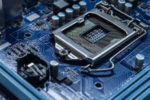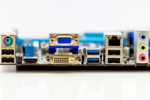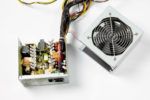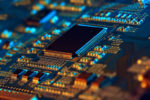What Is a WiFi Motherboard: A Useful Guide for Beginners
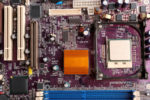
Your desktop computer is a powerful tool, but you need internet connectivity to get the most out of it.
The good thing is that there are many ways for your PC to be connected.
One option is getting WiFi through your motherboard.
But what is a WiFi motherboard? Is it better than using the wired network?
Most PC gamers and enthusiasts know ethernet or local area network connections very well.
Few are aware that desktops can also get WiFi.
Should you keep on using wired connectivity, or should you go wireless?
We have the relevant information that can help you make your decision.
What Is a Motherboard?
Before we dive into WiFi motherboards, let us take a quick look at what a motherboard is.
It is a printed circuit board that connects critical hardware components inside and outside a computer.
It allocates the power and enables the transfer of data, allowing your PC to work as designed.
Motherboards have multiple slots or sockets for the CPU, GPU, RAM, and expansion cards.
They can also connect to the hard drives, SSDs, and front panel ports.
The BIOS or Basic Input/Output System is also located on the motherboard, making it your PC’s control center.
With all the parts linked to it, the motherboard can be likened to your body’s nervous system.
It allows the CPU to control the other parts of the computer the way your brain controls the rest of your body.
ALSO READ: Do All Motherboards Have WiFi?
Where Can You Find the Motherboard?
The motherboard is the biggest circuit board you will find on your computer.
With the amount of space it takes up, it has to be fitted along the largest face of the case.
That means you will see it at the bottom or one of the sides, depending on the tower’s orientation.
It is typically held aloft by mounting screws or clamps to avoid contact with other metallic parts inside the chassis.
This is done to prevent short circuits and to enhance heat dissipation.
What Are the Components of a Motherboard?
Motherboards have several components, and these are among the most important:
- Expansion Slots
Expansion slots are connections or ports that can accommodate smaller printed circuit boards or cards.
These cards add more functionalities to the board, allowing your computer to perform more tasks.
For instance, if the integrated GPU could not support your favorite game, you can plug a dedicated GPU on your motherboard.
To find out how many expansion slots your motherboard has, you need to know its specific model.
Once you have this information, you can look for the manual and find what you need to know about it.
Also, it is important to note that older motherboards have fewer expansion slots.
If you own one and need to add more slots, you can use a riser board.
- Power Supply Connector
Modern motherboards come with the ATX style connector, replacing the older AT style connector.
If you take out your PC’s board, you will see that the ATX connector is one of the biggest connectors on it.
It is designed with a key and can only be inserted in one direction.
It also has a clip at the top which snaps when plugged in, locking the connector in place.
Power supply connectors have either 20 or 24 pins.
It is possible to use a 24-pin power supply connector with a 20-pin connector on the board.
All you have to do is leave the four extra pins on the power supply connector hanging.
However, if the board has 24 pins, you have to connect to all of them.
- SATA Connections
Your motherboard also has sockets for SATA connections.
SATA cables have two types: data transmission and power transmission.
A SATA data cable has seven pins. It transfers data between the motherboard and the drive.
A SATA power cable has fifteen pins and links to the power supply.
- Processor Socket
As its name implies, the processor socket allows the CPU to connect to the motherboard and, consequently, to other hardware.
In older motherboards, this type of connection is implemented using a slot.
However, newer models mostly use the socket.
Sockets come in many different types. It is important to know what type of socket your motherboard has so you know which processors it can accept.
These connectors have certain pin layouts and use specific technologies that need to match.
- RAM Slot
If you have a RAM card, you can insert it into one of the memory slots on your motherboard.
You will find two to four of these slots on most boards today, and they can accept either the DDR or the SDRAM.
You should take note of what type of RAM your board accepts, so you do not end up wasting money on incompatible cards.
- CMOS
CMOS is short for complementary metal-oxide semiconductor.
It is a battery-powered chip that stores information, including the time, date, and your computer’s hardware system.
Its battery lasts around ten years but may vary depending on use and storage conditions.
What Is a WiFi Motherboard?
So what is a WiFi motherboard? The answer is pretty simple: it is a motherboard capable of WiFi connectivity without any additional hardware.
How It Works
The wireless chip is integrated into the board by the manufacturer.
That means you do not have to buy a separate WiFi card or a dongle to get a wireless connection.
When you use a WiFi motherboard, all you have to do is make sure that Windows and the software CD are loaded.
Once you type in the password for the WiFi, your computer is connected.
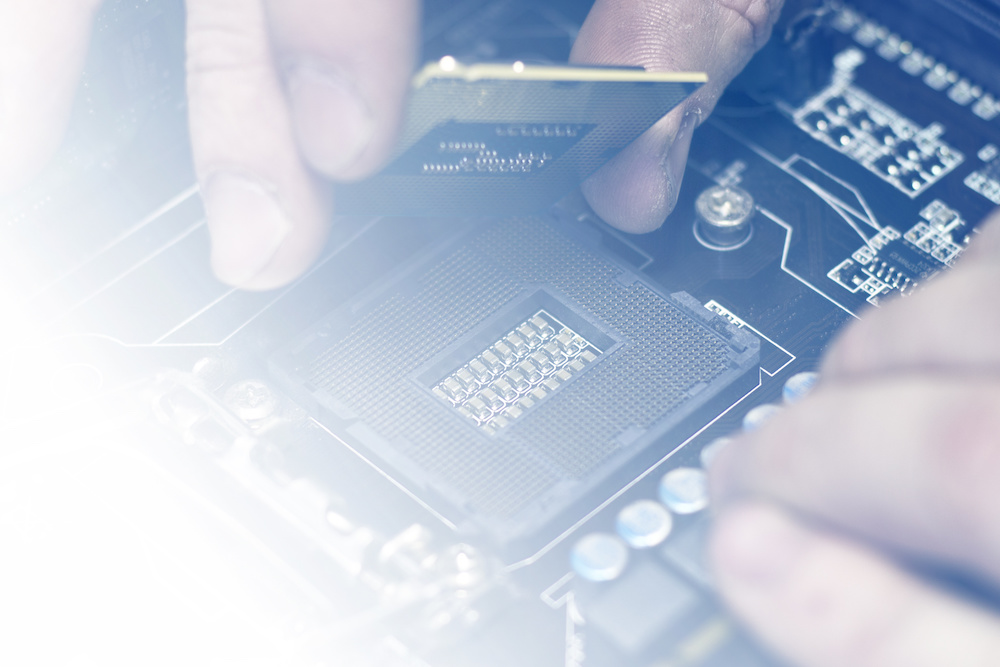
What Is the Difference Between WiFi and Non-WiFi Motherboards?
Wired connections are generally faster.
Still, some people prefer wiFi, as it is easier to use and eliminates the clutter that comes with the ethernet.
If you are one of them, one of your options is to get a motherboard with WiFi capability.
WiFi Motherboard Pros and Cons
If you are building a smaller system like a mini-ITX, your best option is to get a WiFi motherboard.
Newer brands come with WiFi 6, which is the latest version of the 802.11 standard for wireless networks.
Others still have the WiFi 5, which is still serviceable for most applications.
Either way, you will be able to enjoy decent connectivity on your computer without any wires or additional cards.
This brings us to one of the biggest problems with WiFi motherboards.
Once you get a WiFi motherboard, you are stuck with its hardware until you get a new board.
If the WiFi standard changes or the wireless chipset becomes faulty, you won’t be able to replace just that component.
You can still enjoy a wireless connection by using a USB adapter or a PCI card for WiFi.
However, this defeats the whole point of getting the WiFi motherboard in the first place, which is more expensive.
Non-WiFi Motherboard Pros and Cons
There are a few ways to have wireless connectivity, even on a non-WiFi motherboard.
Each has its advantages and disadvantages.
First, if you go with the PCI card, you can buy it at a low cost.
It is also replaceable, so you can get a bigger antenna with a higher gain if you need a stronger signal.
You can even use a cable so you can put the antenna elsewhere in your home or office.
The catch is that you must have an open PCI slot, and you need to buy a compatible card.
Also, you have to open your PC’s case to install it.
A USB adapter is simpler to use and is also relatively affordable.
However, it eats up much space around it, so there is a good chance that it will block other ports.
Another drawback with the USB adapter is that the antenna is irreplaceable.
If you find out later that you need a stronger signal, you need to buy another adapter.
RELATED: Can I Upgrade My Motherboard and CPU Without Reinstalling Windows 10? (Guide)
How To Tell If Your Motherboard Supports WiFi
A quick way to see if your motherboard can support WiFi is by looking at the I/O panel.
It is located at the back of your PC’s tower, and it is where you plug in your peripherals.
If it has antenna connectors, then it has a provision for wifi connection.
Another way is by looking up the specs sheet of your motherboard.
To do this, you need to know its model number.
Finally, you can check if you have an open PCI slot.
If you do, you can buy a PCI WiFi card and insert it into the empty slot.
Is a WiFi Motherboard Worth It?
A motherboard with WiFi costs a fair amount more than non-WiFi boards.
Still, it will allow you to build a small system and do away with some cables.
It is important to note that it is not upgradable or replaceable.
What is more, there are cheaper options that will let you connect your PC to WiFi.
Your decision will ultimately depend on your unique situation or preference.
Having said that, we recommend that you explore ethernet connectivity or the PCI WiFi card before investing in a WiFi motherboard.

